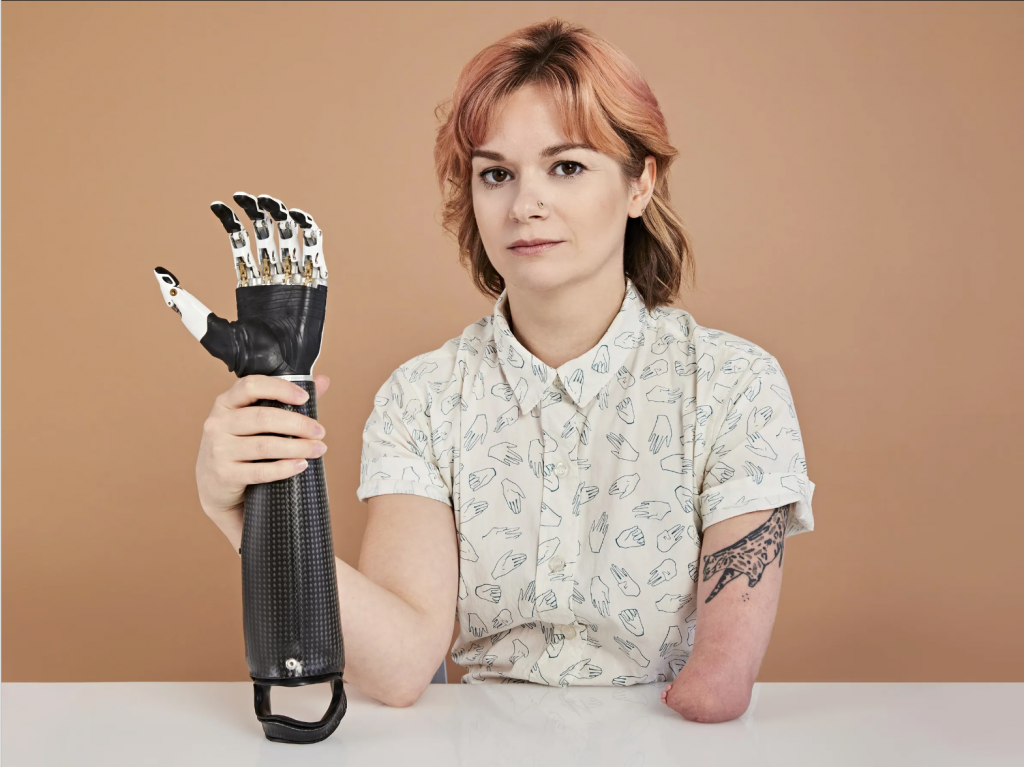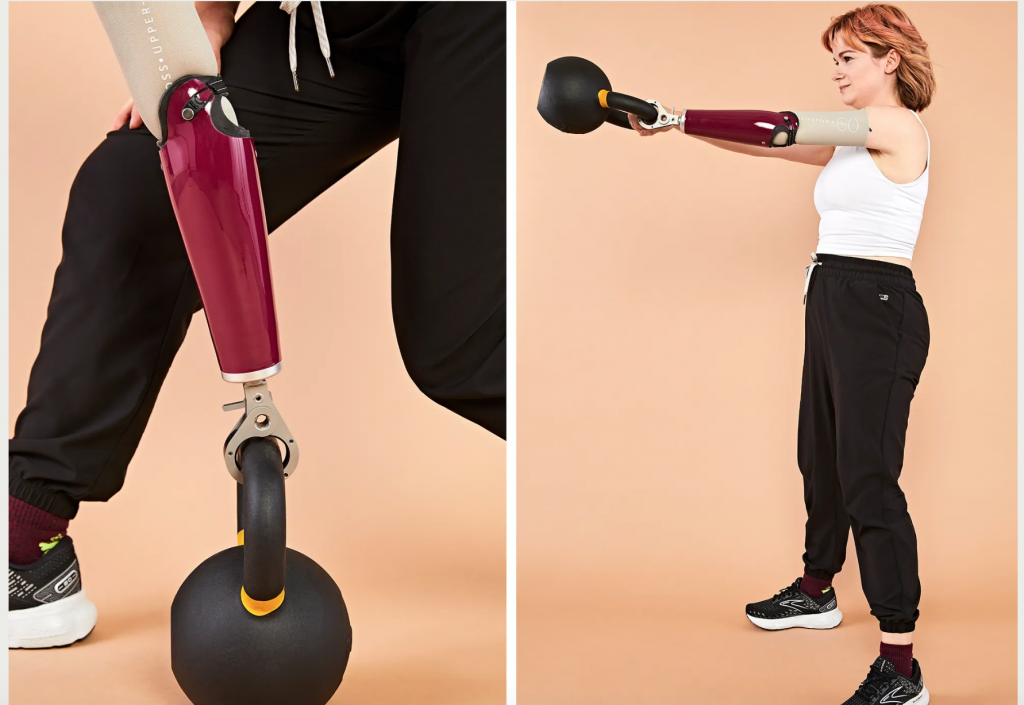
The author, Britt Young, holding her Ottobock iLimb bionic arm. (Source: IEEE Spectrum)
Amputee Helps to Develop Lifelike Bionic Hand with
We were reviewing a series of articles on spectrum.ieee.org that covers every aspect of creating and using a bionic hand. And while we read on, one number jumped out at us. Did you know there are around 185,000 amputations every year in America? And that number is what is driving a so-called “arms race” between bionic entrepreneurs.
The series we mentioned contains headlines like these:
Creating a Prosthetic Hand That Can Feel – IEEE Spectrum ›
Building a Super Robust Robot Hand – IEEE Spectrum ›
Bionic Hand Gives Amputees Sense of Touch – IEEE Spectrum ›
Should Right-to-Repair Laws Extend to Bionic Body Parts? – IEEE … ›
One Woman’s Story
However, the main story we focused on is from Brit Young. Young is an amputee who has revealed some of the complex and frustrating issues that all amputees must deal with when trying to find the right bionic hand for their individual use. It is not something most of us ever think about. Here she explains:
“Today, the people who design prostheses tend to be well-intentioned engineers rather than amputees themselves. The fleshy stumps of the world act as repositories for these designers’ dreams of a high-tech, superhuman future. I know this because throughout my life I have been fitted with some of the most cutting-edge prosthetic devices on the market. After being born missing my left forearm, I was one of the first cohorts of infants in the United States to be fitted with a myoelectric prosthetic hand, an electronic device controlled by the wearer’s muscles tensing against sensors inside the prosthetic socket. Since then, I have donned a variety of prosthetic hands, each of them striving toward perfect fidelity of the human hand—sometimes at a cost of aesthetics, sometimes a cost of functionality, but always designed to mimic and replace what was missing.
She tells of how myoelectric hands evolved “from clawlike constructs to multi-grip, programmable, anatomically accurate facsimiles of the human hand.” While most cost tens of thousands of dollars, they still lack function. Tyler Hayes, CEO of the prosthetics startup Atom Limbs, said in a WeFunder video that helped raise $7.2 million from investors:
“Every moonshot in history has started with a fair amount of crazy in it, from electricity to space travel, and Atom Limbs is no different.”

Activity arms, such as this one manufactured by prosthetics firm Arm Dynamics, are less expensive and more durable than bionic prostheses. The attachment from prosthetic-device company Texas Assistive Devices rated for very heavy weights, allowing the author to perform exercises that would be risky or impossible with her much more expensive iLimb bionic arm.
Young’s story is detailed and a bit lengthy but it does open one’s eyes to the problems of amputees. And it is no secret that AI is being merged into prosthetics. And that is making a world of difference. Some hands simply pinch when they are used. Others are far more intricate and the more intricate hands aren’t always the favorite among new patients.
“We got the feeling that people with multigrasp myoelectric hands were quite tentative about their use,” says Ad Spiers, lecturer in robotics and machine learning at Imperial College London.
It’s no wonder since most myoelectric hands are priced over $20,000, are rarely approved by the insurance, require frequent professional support to change grip patterns and other settings, and have costly and protracted repair processes. As prosthetic technologies become more complex and proprietary, long-term serviceability is an increasing concern. Ideally, the device should be easily fixable by the user. And yet some prosthetic startups are pitching a subscription model, in which users continue to pay for access to repairs and support.
This is a positive and informative piece that goes well with the series they published. And her article really shows how very difficult it can be to find a suitable device and match it to the right patient.
read more at spectrum.ieee.org







Leave A Comment